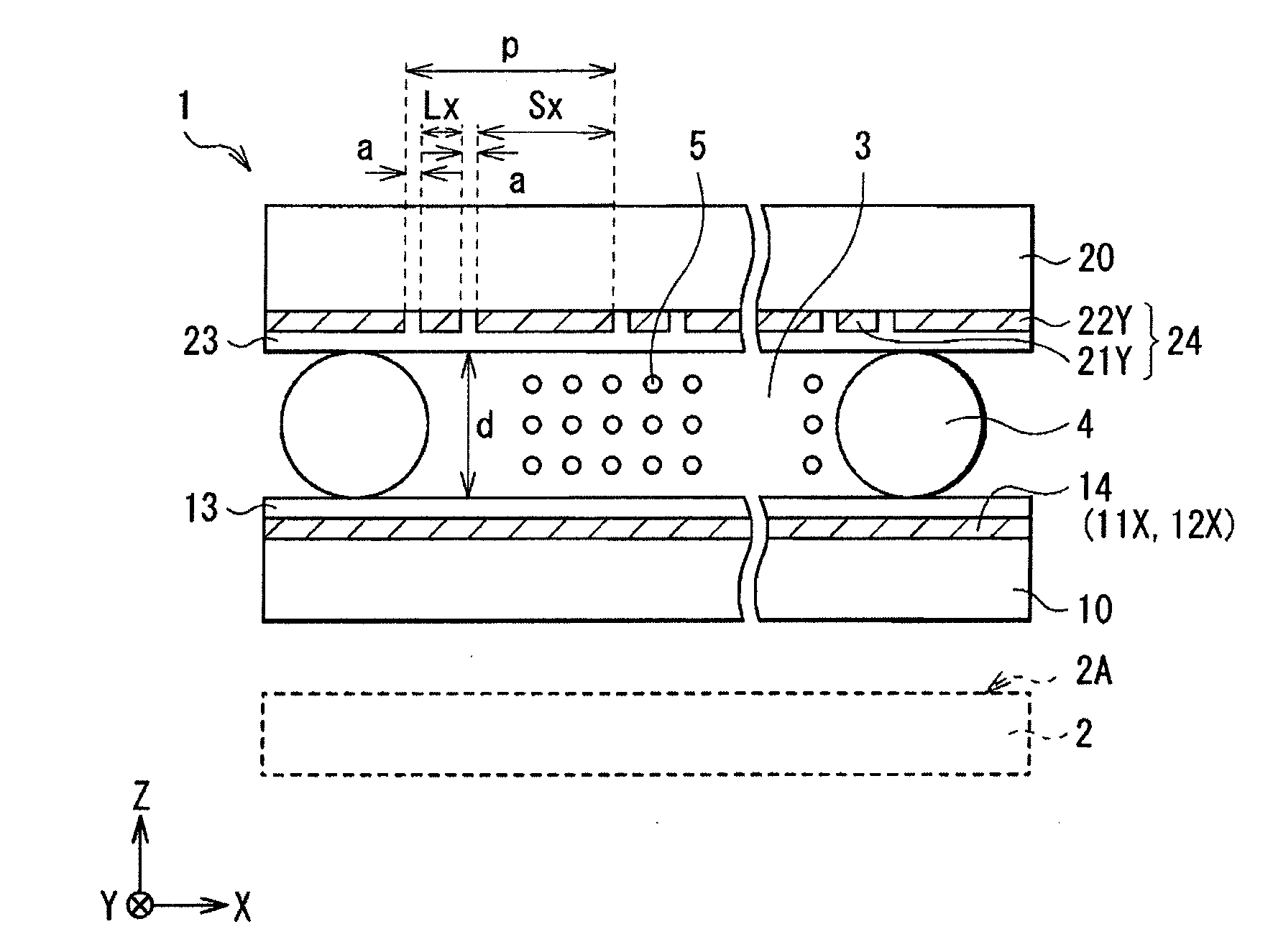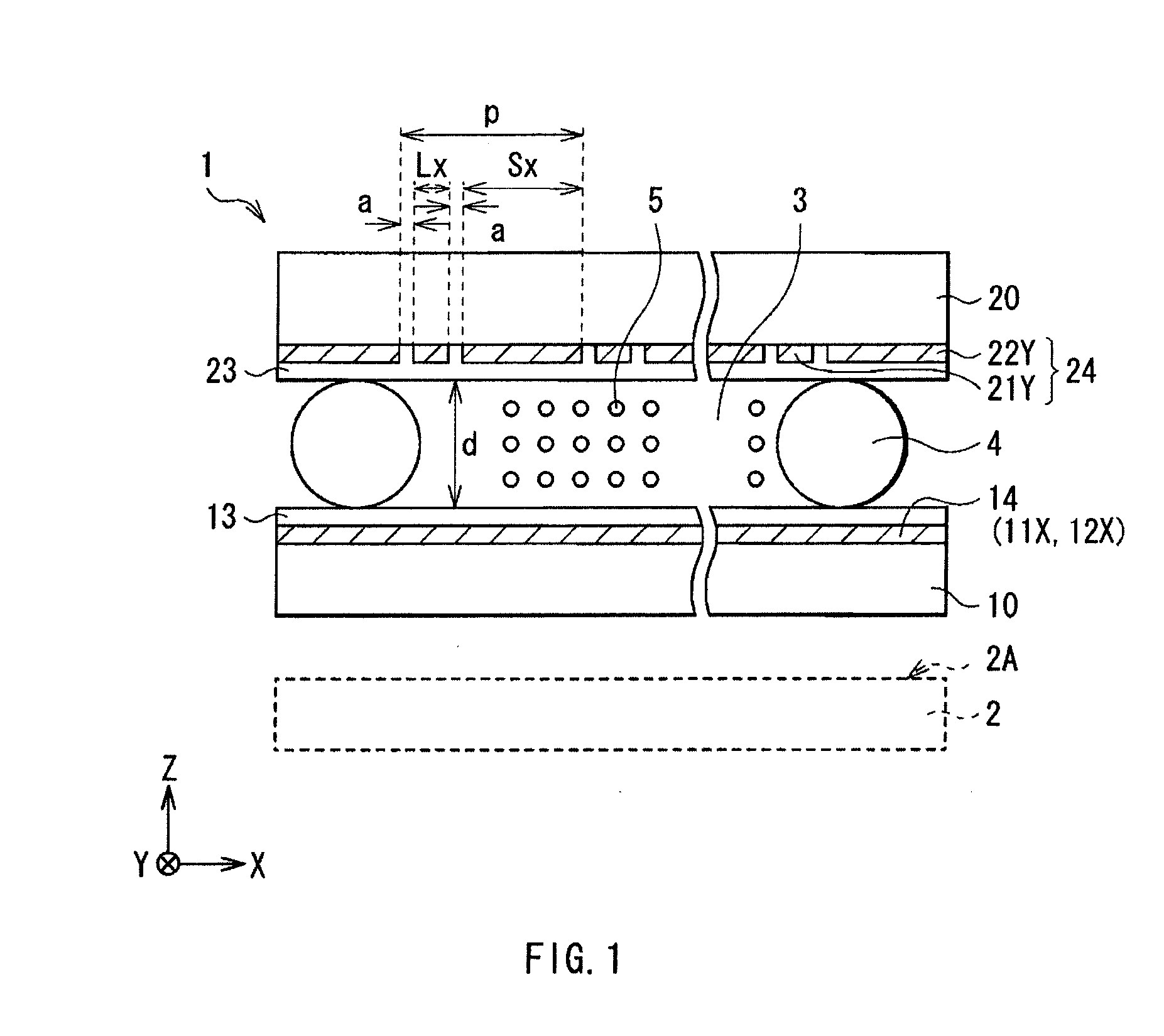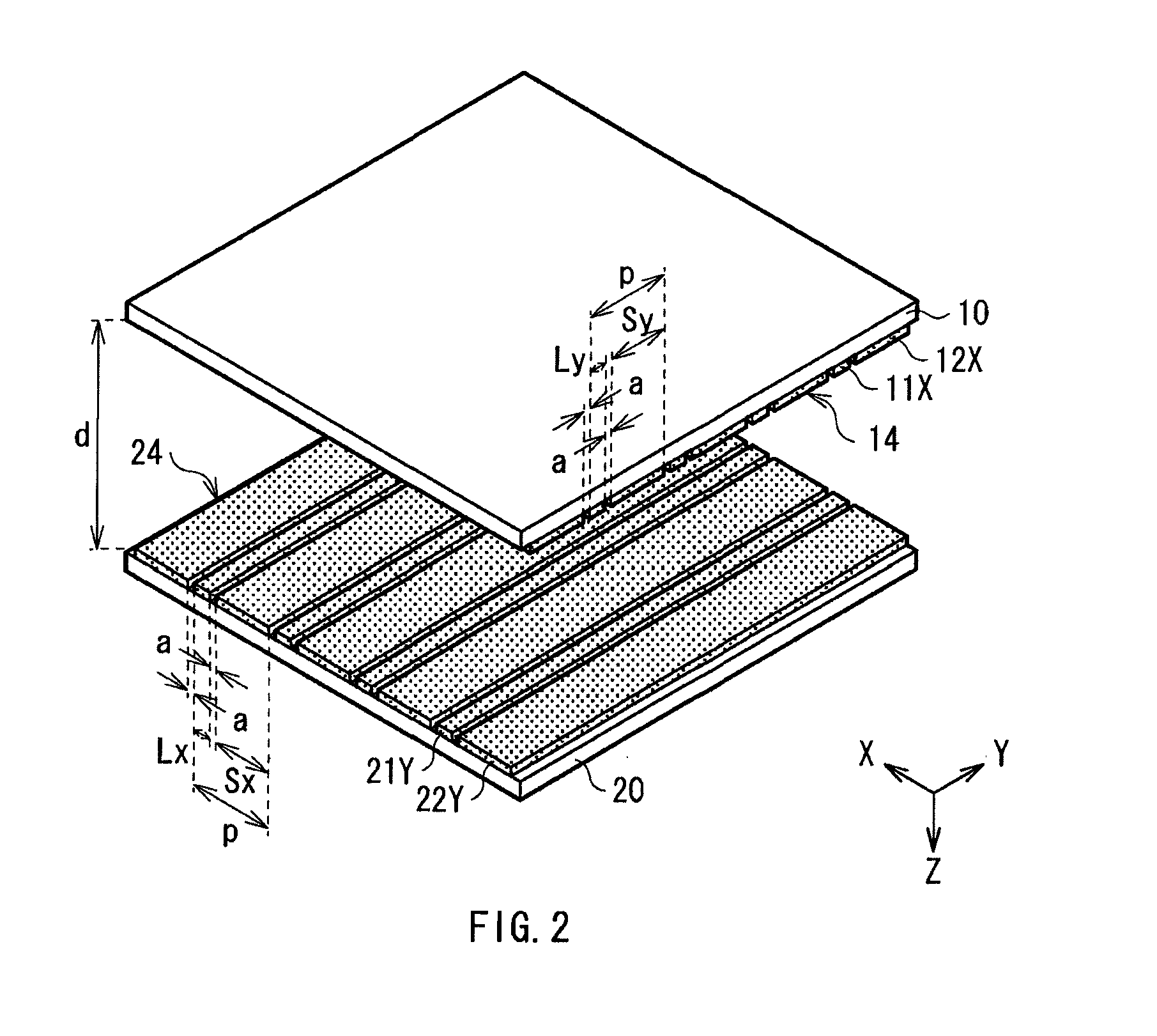Lens array device and image display
an array device and array technology, applied in optics, instruments, electrical devices, etc., can solve the problems of very etc., and achieve poor image display quality in the two-dimensional display mode, disadvantageous in power consumption, and disadvantageous in process and cos
- Summary
- Abstract
- Description
- Claims
- Application Information
AI Technical Summary
Benefits of technology
Problems solved by technology
Method used
Image
Examples
first embodiment
Whole Configurations of Lens Array Device and Image Display
[0049]FIG. 1 illustrates a configuration example of a lens array device 1 according to a first embodiment of the invention. The lens array device 1 includes a first substrate 10 and a second substrate 20 which face each other with a distance d in between, and a liquid crystal layer 3 arranged between the first substrate 10 and the second substrate 20. The first substrate 10 and the second substrate 20 are transparent substrates made of, for example, a glass material or a resin material. A first electrode group 14 in which a plurality of transparent electrodes extending in a first direction are arranged in parallel at intervals in a width direction is formed on a side facing the second substrate 20 of the first substrate 10. An alignment film 13 is formed on the first substrate 10 with the first electrode group 14 in between. A second electrode group 24 in which a plurality of transparent electrodes extending in a second dire...
second embodiment
[0073]Next, a lens array device and an image display according to a second embodiment of the invention will be described below. Like components are denoted by like numerals as of the lens array device 1 and the image display according to the first embodiment, and will not be further described.
[0074]In the lens array device 1 according to the first embodiment, in the case where the application states of the drive voltage to the transparent electrodes on an upper side and a lower side are implemented by a driving method illustrated in FIG. 3, there is a possibility that a lens shape (the alignment state of the liquid crystal molecules 5) is changed with time, thereby not to control the liquid crystal layer 3 into a desired lens state. In particular, in the case where a gap between electrodes (the distance d between substrates) is narrowed so as to achieve higher definition and higher response speed and the like, there is a high possibility that the liquid crystal layer 3 is not contro...
examples
[0081]Next, specific examples of the image display using the lens array device 1 according to the embodiment will be described below.
[0082]FIG. 11 illustrates a configuration of an image display according to examples. In the example, as the first substrate 10 and the second substrate 20 of the lens array device 1, electrode substrates formed by arranging transparent electrodes made of ITO on glass substrates were used. Then, by a known photolithography method and a wet etching method or a dry etching method, the electrodes are patterned into shapes of electrodes of the first electrode group 14 (the first electrodes 11X and the second electrodes 12X) and the second electrode group 24 (the first electrodes 21Y and the second electrodes 22Y). Polyimide was applied to the substrates by spin coating, and then polyimide was fired to form the alignment films 13 and 23. After firing the material, a rubbing process was performed on surfaces of the alignment films 13 and 23, and the alignment...
PUM
| Property | Measurement | Unit |
|---|---|---|
| applied voltage | aaaaa | aaaaa |
| refractive index distribution | aaaaa | aaaaa |
| distance | aaaaa | aaaaa |
Abstract
Description
Claims
Application Information
 Login to View More
Login to View More - R&D
- Intellectual Property
- Life Sciences
- Materials
- Tech Scout
- Unparalleled Data Quality
- Higher Quality Content
- 60% Fewer Hallucinations
Browse by: Latest US Patents, China's latest patents, Technical Efficacy Thesaurus, Application Domain, Technology Topic, Popular Technical Reports.
© 2025 PatSnap. All rights reserved.Legal|Privacy policy|Modern Slavery Act Transparency Statement|Sitemap|About US| Contact US: help@patsnap.com



